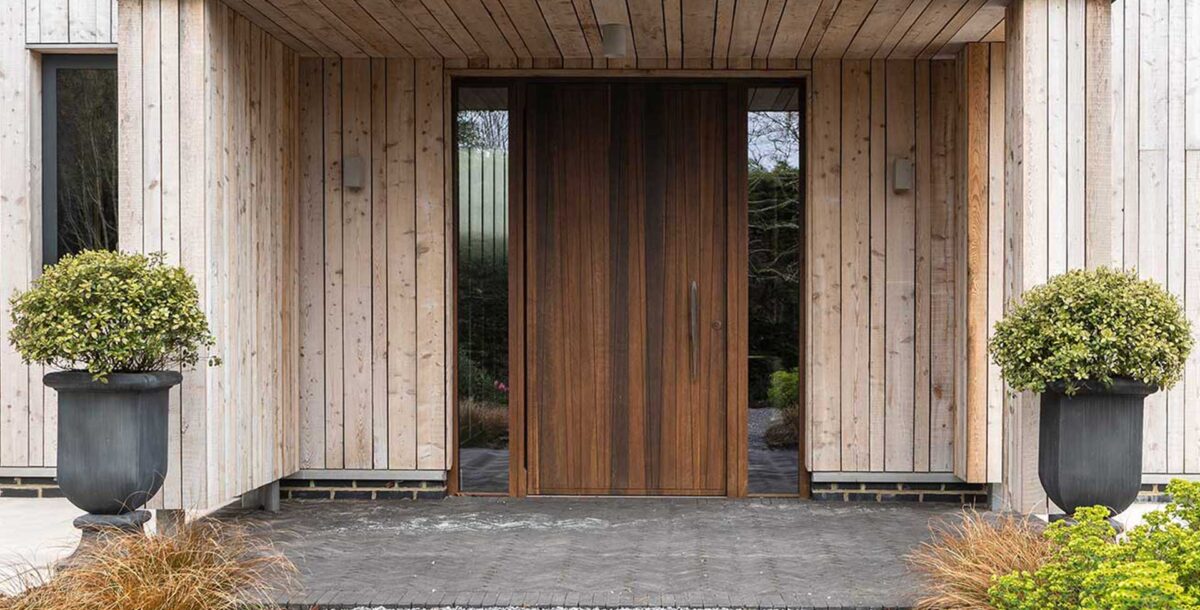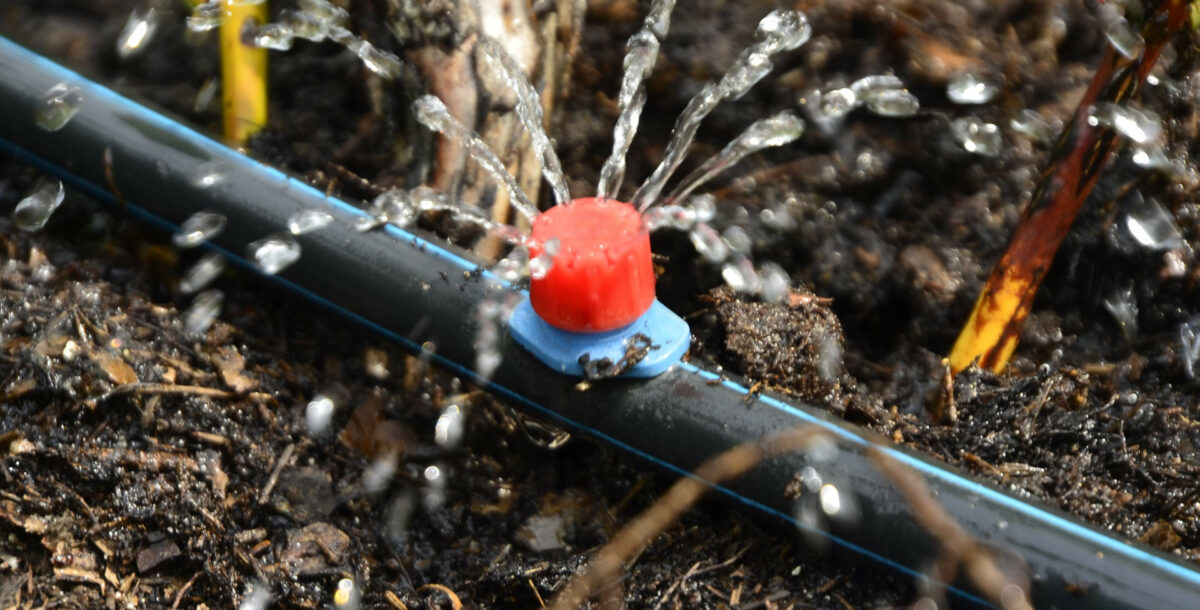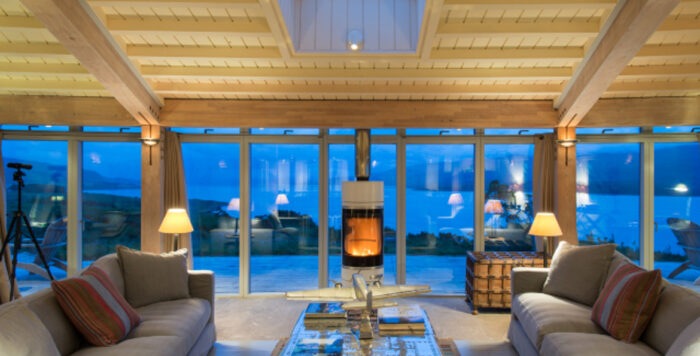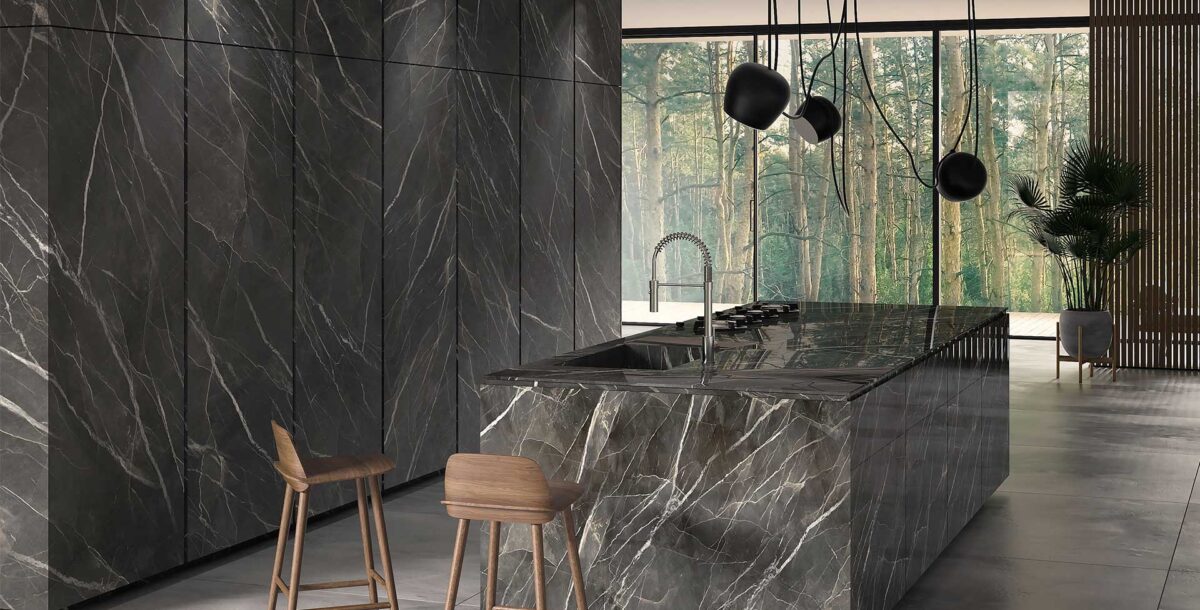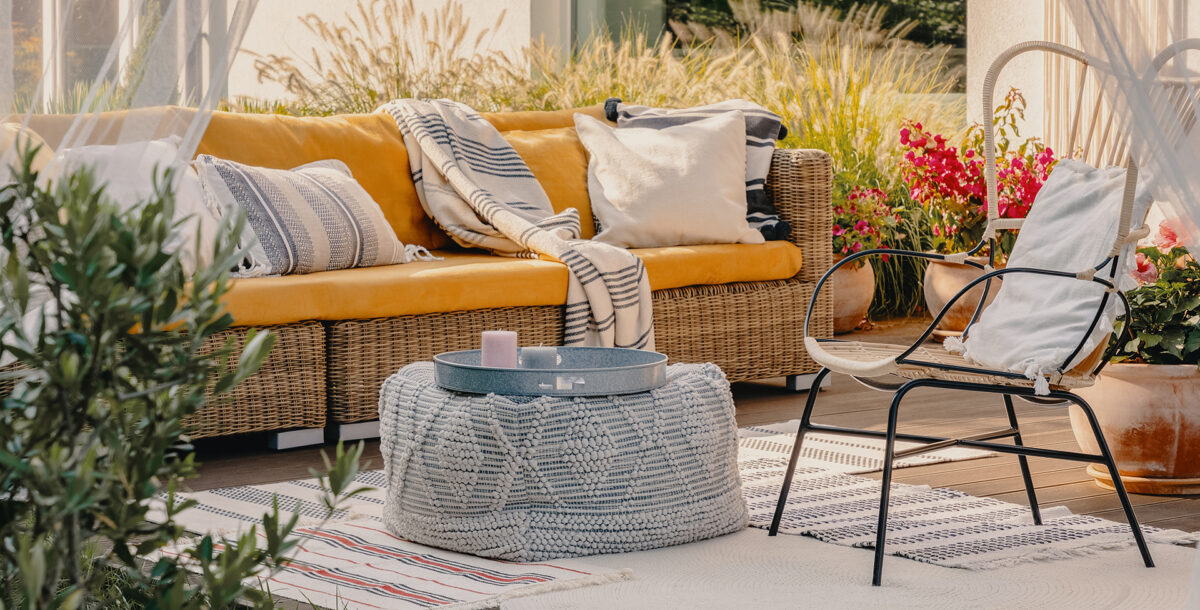Small garden design ideas
Incorporating these small garden design ideas can transform even the tiniest outdoor space into a lush and inviting oasis
When it comes to small garden design, the initial planning is key. Think about which direction your garden faces and where the sunlight will hit throughout the day, so you can position your seating areas to make the most of the natural sunlight and add sheltered spots in as well. Consider the level of maintenance you want, even the most bijoux of gardens take some work. No-dig planters are ideal for low-maintenance, yet sustainable growing.
Think about privacy, and using decorative screens or arches filled with fragrant climbing plants for seclusion. Layered borders add depth and visual interest to compact gardens by incorporating plants of varying heights and forms. By arranging tall specimens towards the back and gradually decreasing plant height towards the front, layered borders create the illusion of depth and perspective, making small gardens feel larger and more dynamic.
From mirrors to reflect light, to fragrant vine arches to bring height, small garden design offers endless possibilities for creating beautiful and functional outdoor spaces that maximize every available inch and allow you to get really creative.
Add height with garden arches
Garden arches and vine arches have been around for centuries, and everyone from the Ancient Egyptians to the Romans has used them in their outdoor spaces to create visual interest and shaded areas. Vine arches are ideal in small garden design as they add height and structure to bring in more colour. Add a mix of plants to your arch with staggered blooming seasons so you get fragrance year-round. By drawing the eye upwards arches create a sense of space.
Agriframes’ range runs the gamut from gothic arbours to wall frames and its vine arch (pictured) will support a vine planted on either side and is shaped to allow the plants to be trained and easily pruned. Made from 25mm tubular steel and galvanised both inside and out for strength and rust prevention, it’s got a UV stabilised coating with matt black texture finish and is perfect for all heavy climbers including rambling roses and wisteria.

Image credit: Agriframes
Go for a limited colour palette
Limiting the colour palette in small garden design can be a strategic decision that enhances the overall aesthetic and creates a cohesive outdoor space. Muted colours, or painting everything white takes away the visual clutter and gives a sense of airy, openness. With a limited colour palette you can highlight texture and form, and go for a simple planting scheme of white and green.
If you’re starting from scratch consider adding visual interest with something like an alcove you can house a statement lamp in. Created by Samy Rio, the Petite Friture Quasar Portable Lamp (pictured) is great for moving around a small garden. When it comes to outdoor furniture in small garden design, minimalist works well. Hay’s iconic Palissade range from Nest (pictured) designed by Ronan and Erwan Bouroullec is a classic, and comes in benches, cafe sets, dining sets and outdoor armchairs.
 Image credit: Nest
Image credit: Nest
Add as much greenery and colour as you can
Being surrounded by plants is a joy and in a small garden, the addition of greenery and colour can transform even the most modest space into a lush haven to relax in. One of the best ways to do this is through layered planting in borders. Firstly, sketch out a layout and then pick a variety of plants with different heights, forms, colours, and textures to create layers of interest.
Add tall plants to the back layer, things like delphiniums, aquilegia and verbena bonariensis all work well. Great medium-height plants for the middle layer include yarrow, alliums and Japanese anemones. Finally, plant low-growing plants like dianthus, erigeron and saliva for the front layer. Aim for a mix of evergreen and deciduous plants for year-round appeal and beautiful multi-dimensional borders. Check out Dutch landscape architect Piet Oudolf before you start. He’s the master of the incredible border.
If you don’t have the space for borders, you can create the same effect of layered planting, but within pots. This is also great as you can move them around the garden. When choosing perennials for pots, think about plants that are hardy for winter and have a long flowering season. Try hostas to add greenery, soft wispy grasses to add texture and geraniums.

Image credit: Talking Tables
Add a garden mirror
Mirrors can help amplify natural light in shaded or darker areas of the garden by reflecting sunlight into the space. They work well in everything from a small garden or courtyard to a roof terrace or balcony. Run vintage or Crittall style mirrors along or against the back wall of your garden and plant foliage and pots in front of them to give the illusion of space and the feel of a secret garden. Rockett St. George has a large antique metal window mirror with opening doors, which is a great way of giving the illusion of a window.
Think about the placement of your mirror, for example if you add large frameless mirrors into the corners of your garden they’ll blend seamlessly into the space. Positioning mirrors low to the ground can help accentuate your flower beds and planting and make it seem like you have double the plants. Consider a pond mirror to reflect surrounding plants and the sky. A Place for Everything does a great black metal garden water mirror to sink into the lawn and fill with water.

A fold-up table and bar will maximise space
Utilising space is key in small garden design, and Forest has devised a genius fold-down table and bar that you can affix to your wall. When assembled, the timber wall-mounted table and bar are a compact 100 x 77 x 14 cm (and 24.5 kg in weight). The unit has been pressure-treated for longevity and protection against the elements, and it also has a 15-year anti-rot guarantee. The unit comes with internal shelves in which you can handily store glasses and bottles.

Image credit: Forest
Blur your indoor/outdoor space
Creating a strong relationship between indoor and outdoor living is becoming increasingly important for our well-being and is high on the list of many an architects brief. Biophilic design is a mainstay in modern living and Oliver Heath explains that “having a connection to any outside space is an opportunity to connect with nature. No matter how big or small, your space, you want to make that a place that is easy and accessible to use in as many different weather conditions as possible, to really encourage people to use it”.
Improvements in glass technology mean it’s easier than ever to link inside and outside, and increase light and natural ventilation in your home. Bi-fold doors tend to be made from one of four materials; aluminium, timber, composite and uPVC, Grand Designs has an ultimate bi-fold doors guide if you’re wondering which to go for. Crittall windows and doors are a stylish, sustainable alternative for blending your indoor/outdoor space and are made from 100 per cent recycled steel.
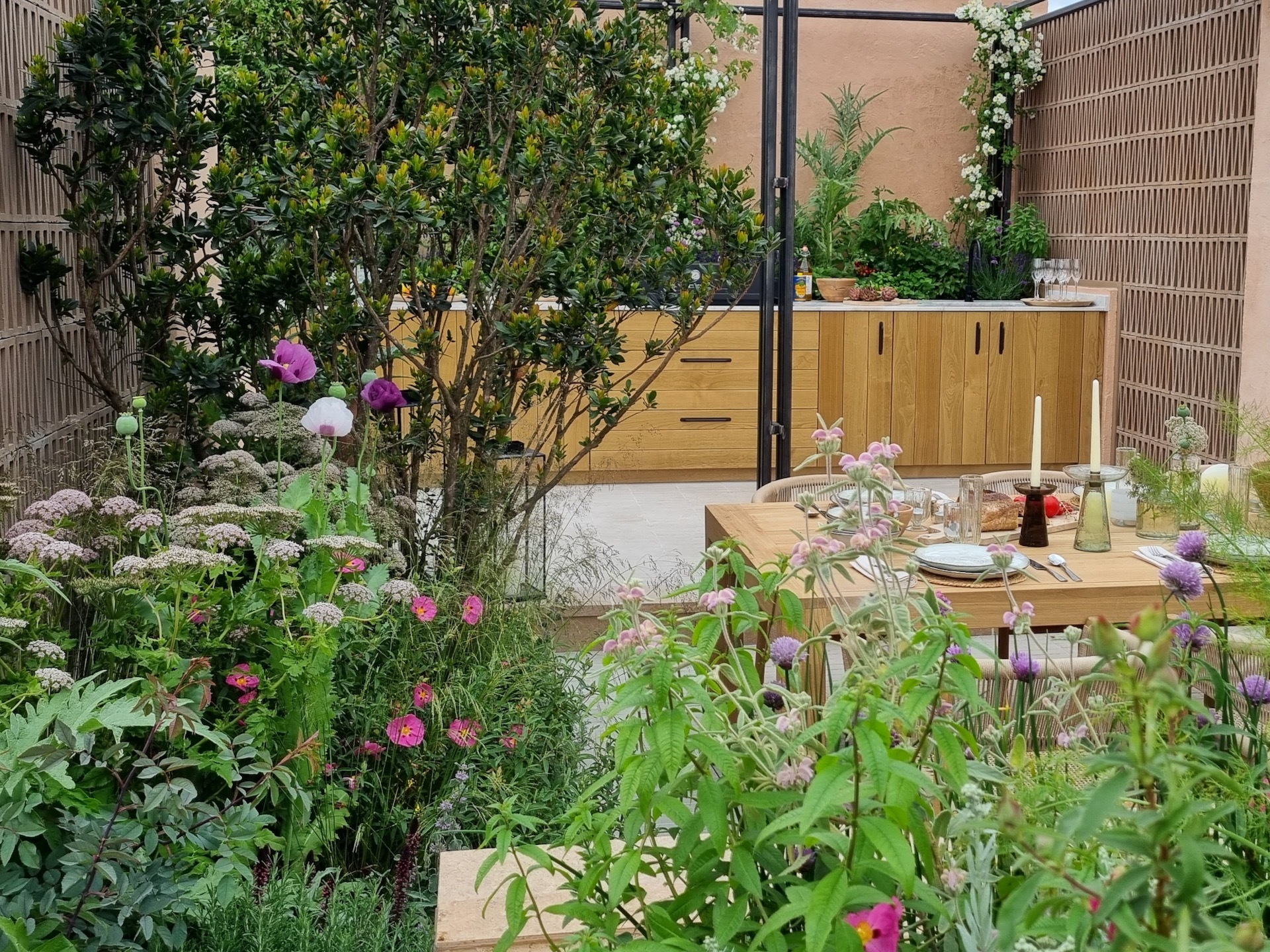
Build a statement outdoor kitchen
No matter what size your garden is, an outdoor kitchen will turn your space into an enjoyable, functional space for entertaining. Schiedel build safe and efficient wood burning stoves and are some of the most sustainable, thanks to their natural insulating properties. The company’s kitchens come in a left-hand or right-hand kit and you can download Schiedel’s app to see where it fits best in your garden.
The Hale (pictured) is made from volcanic pumice (sourced from the Hekla Volcano in Iceland) and Schiedel explain that “pumice allows the flue gases in the chimney to quickly reach their optimum temperature, enabling the heating appliance to reach its peak performance shortly after lighting”. “It keeps the chimney warmer longer as the heat output of the appliance decreases, once again aiding performance and reducing the likelihood of condensation and soot build-up”.

Image credit: Schiedel
A glass greenhouse adds the illusion of depth
As glass greenhouse can provide a visual anchor at the bottom of a small garden as the transparent nature will allow uninterrupted views through the structure and the reflective play of light and shadows with sunlight filtering through the panels can create a sense of depth, as well as adding some height.
A greenhouse will add an additional room to small garden design. Of course, you can use it as a plant nursery to propagate seeds or for year-round production of herbs, fruit and vegetables. Or you could get creative and use turn it into an additional living space or outdoor living room, add ambient lighting, comfy seating and blankets to make use of it in every season.
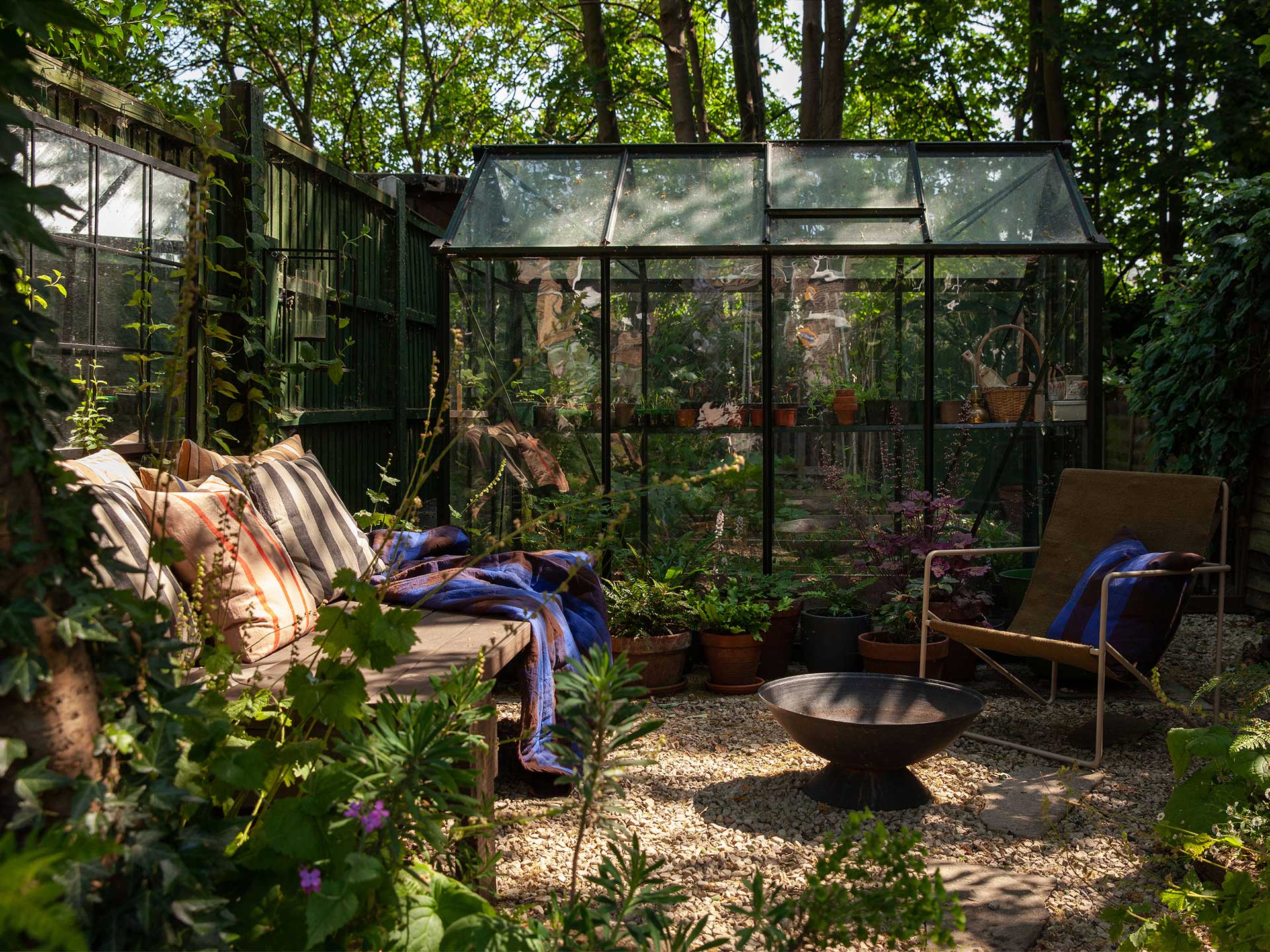
Image credit: Nest
Plant vertically instead of horizontally
When space is at a premium, and you don’t have the borders to plant on the ground level, think about planting vertically. Wall-mounted vertical gardens have plenty of advantages that go beyond space optimisation. They can add visual interest and are a great way of zoning different spaces in small garden design, and given their positioning vertical gardening can give enhanced sunlight exposure, plus it’s also much easier for pruning and harvesting. If you attach a vertical planter to a brick wall, you can transform the space with a living wall. Forest Garden’s collection are also modular, meaning you can expand your collection over time.
There’s a variety of planting options with vertical planting, as they’ll take the weight of hanging pots. Ferns are a low-maintenance plant to manage and their feathery stems can look great trailing down the side of a wall and they work well in a shady spot. Herbs like basil, mint, and parsley can grow well in vertical planters and if want a vertical vegetable garden, aim for a south-facing wall and consider runner beans, tomatoes, cucumbers and squash.
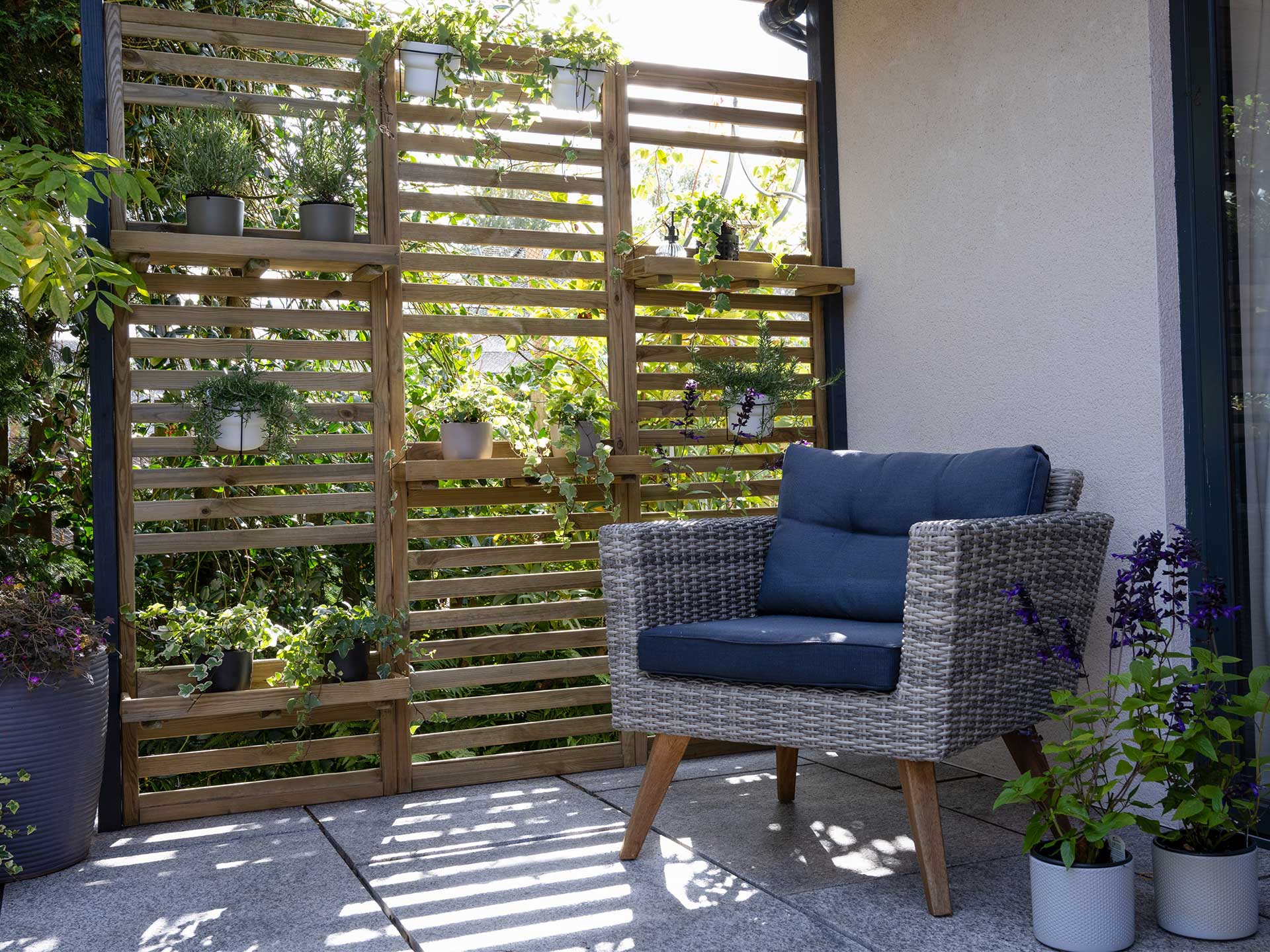
Image credit: Forest
Opt for no-dig planters
Regenerative gardening is a sustainable and more holistic approach to gardening, which increasing numbers of people are harnessing in their garden practices. Regenerative gardening can be done by implementing a no-dig garden. By ditching the forks and spades, no-dig gardens naturally improve soil health and enhances eco-systems through a combination of composting and mulching.
RHS describe mulching as “generally used to save water, suppress weeds and improve the soil around plants but it also gives your garden a neat, tidy appearance and can reduce the amount of time spent on tasks such as watering and weeding. Mulches help soil retain moisture in summer, rain to penetrate the soil in winter, prevent weeds from growing and protect the roots of plants in winter.”
The no-dig method will increase biodiversity and improve soil structure and health. Bring a no-dig garden into a small garden design with freestanding tiered wooden planters. Forest’s Caledonian planters (pictured) can hold around 250 litres of soil an are a great way of incorporating a compact allotment or herb garden into your outdoor space.

Image credit: Forest

